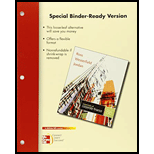
Case synopsis:
Company S is a real estate firm, whose CEO (chief executive officer) is Person R. The firm buys real estate and rents it to tenants. The firm has profit for each year. Before the foundation of Company S, Person R was the founder and CEO of Company A, which is a farming operation. Company A was a failure firm, which ended up with bankruptcy. This situation made Person R to be extremely averse towards debt financing.
Hence, the company is completely financed through equity. Company S is assessing a plan to buy a huge tract of land, which would be leased to the tenant farmers. This purchase is predicted to raise the annual earnings before tax in perpetuity. Person J is the new CFO (Chief financial officer) of Company S, who found the present capital cost of the company.
Person J felt that the company will be very valuable, if it adds debt in its capital structure. While evaluating whether the company could issue debt to completely finance the project, she found that it can issue bonds at a par value with coupon rate. She found an optimal range of capital structure between 70% equity and 30% debt.
Characters in the case:
- Company S
- Company A
- Person S
- Person J
Adequate information:
- If Company S moves beyond the 30% debt, the bonds issued by the company will have a lower rating and a greater coupon as the possibility of financial distress and the associated cost will increase.
- Company S also has a corporate rate of tax.
To discuss: Whether Person X will suggest equity or debt to finance the purchase of land, if Person S wants to expand the market value of the company.
Want to see the full answer?
Check out a sample textbook solution
Chapter 13 Solutions
ESSENTIAL OF CORP FINANCE W/CONNECT
- According to car experts, which of the following ordinarily provides the best value in automobile ownership? Always buying a new car and driving it only a few years. Buying a relatively new used car and driving it for a long time. Buying the cheapest used car available.arrow_forwardPat and Chris have identical interest-bearing bank accounts that pay them $15 interest per year. Pat leaves the $15 in the account each year, while Chris takes the $15 home to a jar and never spends any of it. After five years, who has more money? Explarrow_forwardSolve this finance with no aiarrow_forward
- Explain about corporate finance? no aiarrow_forwardSolve it Pat and Chris have identical interest-bearing bank accounts that pay them $15 interest per year. Pat leaves the $15 in the account each year, while Chris takes the $15 home to a jar and never spends any of it. After five years, who has more money?arrow_forwardFinance question subject. solvearrow_forward
- No ai answerarrow_forwardDont use ai solvearrow_forwardThe Short-Line Railroad is considering a $140,000 investment in either of two companies. The cash flows are as follows: Year Electric Co. Water Works 1.................. $85,000 $30,0002.................. 25,000 25,0003.................. 30,000 85,0004–10 ............ 10,000 10,000a. Using the payback method, what will the decision be? b. Using the Net Present Value method, which is the better project? The discount rate is 10%.arrow_forward
- Skyline Corp. will invest $130,000 in a project that will not begin to produce returns until after the 3rd year. From the end of the 3rd year until the end of the 12th year (10 periods), the annual cash flow will be $34,000. If the cost of capital is 12 percent, should this project be undertaken?arrow_forwardWhich of the following would hurt your credit score? Closing a long-held credit card account. Paying off student loan debt. Getting marriedarrow_forwardWhich of the following would be expected to hold its value best during a time of inflation? A certificate of deposit. A corporate bond. A house.arrow_forward
 Financial Accounting: The Impact on Decision Make...AccountingISBN:9781305654174Author:Gary A. Porter, Curtis L. NortonPublisher:Cengage Learning
Financial Accounting: The Impact on Decision Make...AccountingISBN:9781305654174Author:Gary A. Porter, Curtis L. NortonPublisher:Cengage Learning Intermediate Financial Management (MindTap Course...FinanceISBN:9781337395083Author:Eugene F. Brigham, Phillip R. DavesPublisher:Cengage Learning
Intermediate Financial Management (MindTap Course...FinanceISBN:9781337395083Author:Eugene F. Brigham, Phillip R. DavesPublisher:Cengage Learning





